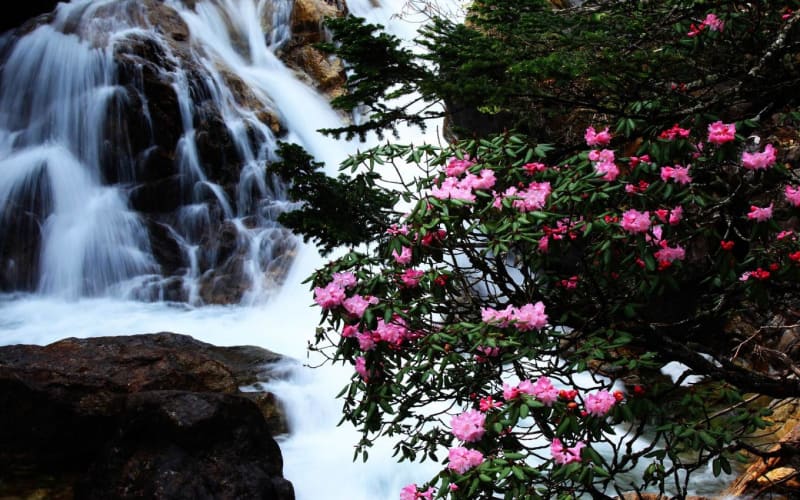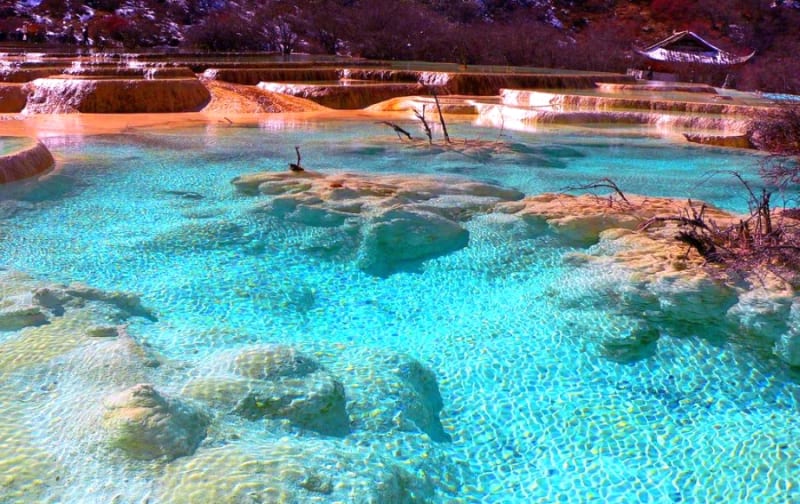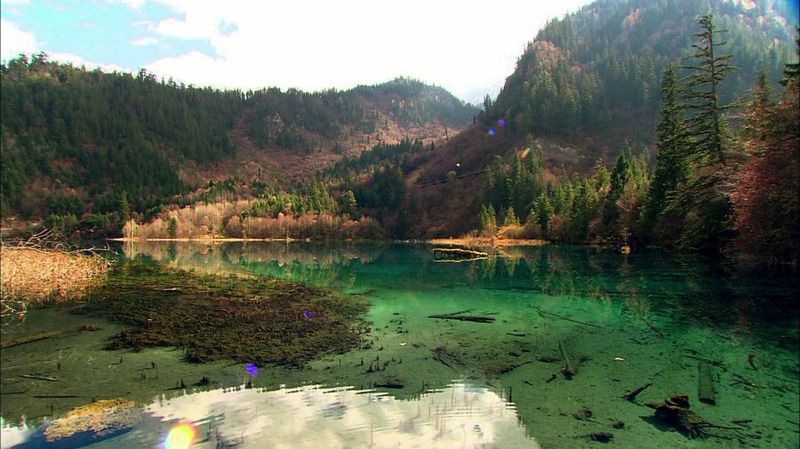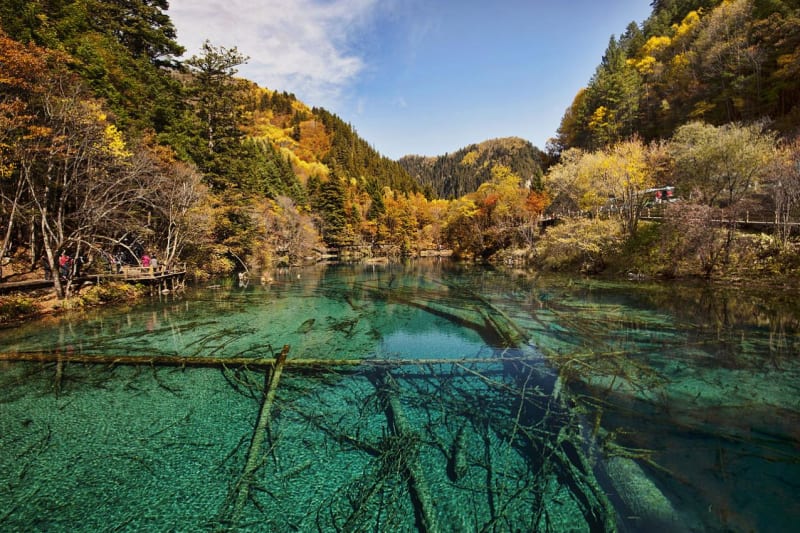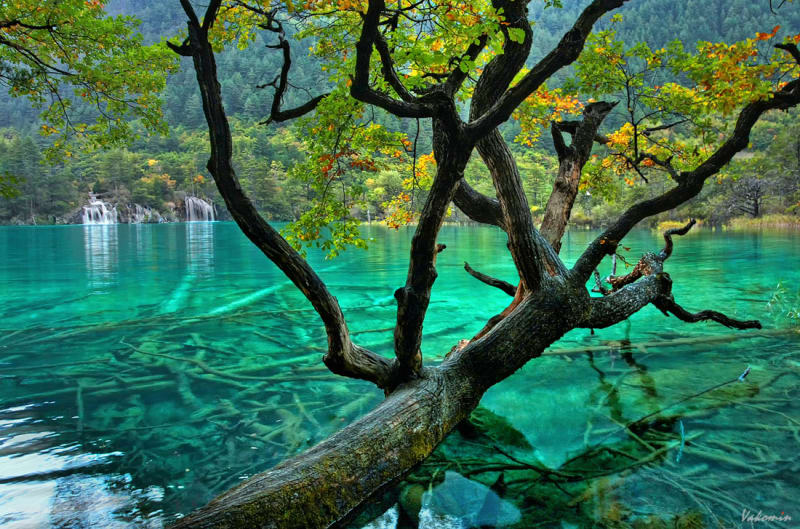Jiuzhaigou National Park
Jiuzhaigou is a national park in the northern part of Sichuan Province. It is famous for its multi-tiered waterfalls and multicolored lakes. The territory was listed as a UNESCO World Heritage Site in 1992. The total area occupied by the park is 1,320 km2, 600 of which are located in the buffer zone.
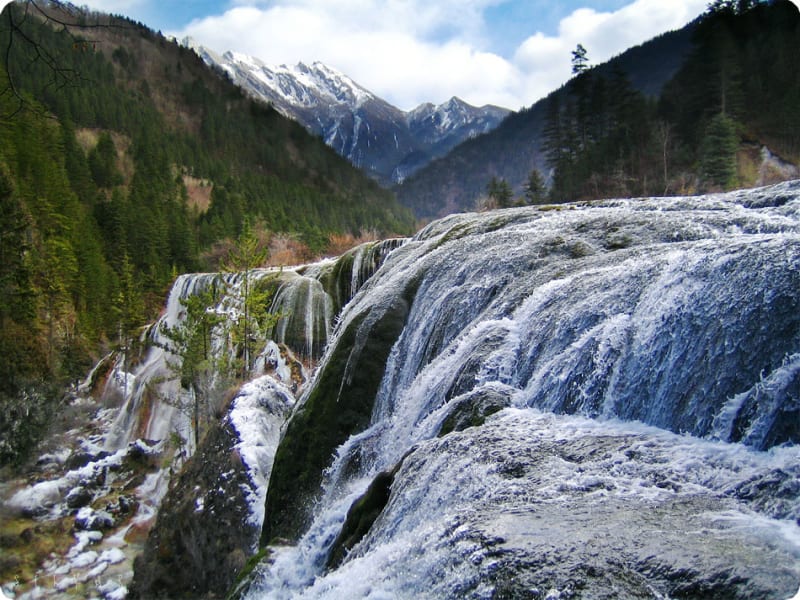
This remote area was inhabited by Tibetans and the Qiang people centuries ago, but was not officially opened until 1972. Until 1979, intensive tree cutting was carried out here, without worrying about restoring the number of trees. In 1982, the Chinese authorities declared the area a national park and in 1984 it was opened to tourists. There are 9 Tibetan villages in the park, hence the name Jiuzhaigou Park, which translates as "Valley of the Nine Villages".
Approximately 300 km2 of the park is covered with untouched forests. Jiuzhaigou is especially beautiful in autumn, the forests are covered with yellow, red, and golden colors, which attracts many tourists here. The park has a very rich flora, many of the plants are unique and are not found anywhere else. Of the animals, it is worth noting the large panda and the golden snub-nosed monkey, whose numbers are very small. 140 representatives of birds have also found shelter here.
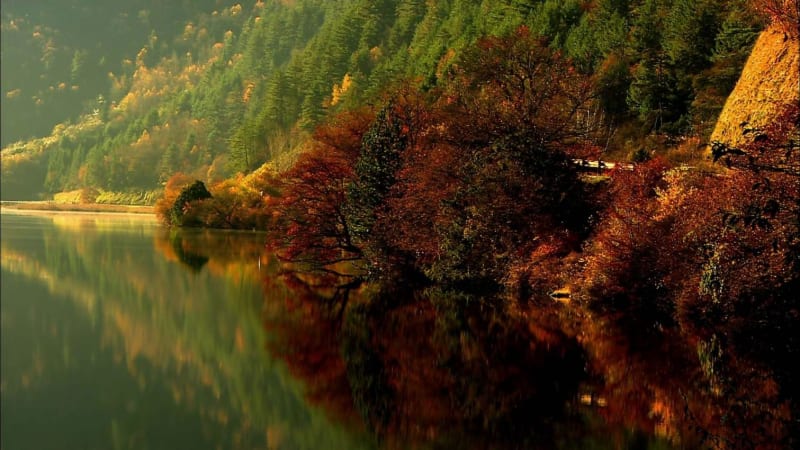
The main feature of Jiuzhaigou is its emerald, turquoise, and gold-colored lakes. The Tibetans living here call them "haizi", which translates as "son of the sea". Lakes were created by melting glaciers and rocks blocking them. The water in the lakes is very clear, to the extent that it can be seen at great depths. According to legend, heavenly goddesses washed in the local lakes and their blushes colored the water. There are rumors that mermaids are sometimes seen here. Perhaps this is due to the bottom sediments of calcium carbonate, which sometimes take on unusual forms of humans and slumbering dragons. In some places, natural dams are additionally reinforced, as they are very fragile. Travelers are not even allowed to touch the water.
In addition to the lakes, there are other attractions, such as the Sword-shaped rock, which is more than 500 meters high.
But the lakes are the most interesting.
- Swan Lake is a magnificent lake where you can see a lot of ducks and swans.
- Grassy Lake is a shallow lake where algae and aquatic plants draw wonderful patterns.
- Bamboo Lake for arrows is where the action of the Hero movie, released in 2002, takes place. Its territory is quite large - 170,000 m2, and the depth is 6 meters.
- Panda Lake - it attracts with its emerald water, besides the nearby Panda waterfall flows into it, which has several tiers, with a total height of 78 meters.
- Five Flowers Lake is a multicolored and shallow lake with many fallen trees at the bottom.
- Mirror Lake is a calm lake, in it you can see the reflection of the nearest area.
- Long lake - it is located at a high altitude and has a huge size - 7.5 km long, and the depth reaches 103 meters. It has no runoff and is fueled only by melting glaciers. Local legends claim that a monster lives at the bottom of the lake.
- The five-colored pond is small, but it is more noticeable from the rest of the Jiuzhaigou lakes. He has gorgeous colorful underwater landscapes.
- Seasonal lakes are a sequence of three lakes near the main road that appear and disappear annually.
- Lake Nogilan and Lake Shuzhen are a chain of 18 and 19 lakes that appeared when glaciers converged, and then divided by natural dams.
- Sleeping Dragon Lake - it was named so because the calcareous runoff at the bottom is similar in shape to the dragon lying at the bottom.
- Reed lake is essentially a swamp overgrown with reeds with a zigzag channel.
Pearl Shoal is a spacious, slightly sloping terrace with calcium deposits. The famous Pearl Waterfall flows down from it, which is a curtain of water 28 meters high and 310 meters wide.
The Nojilan waterfalls are located next to the gorges, and have no less impressive dimensions - 20 meters high and 320 meters wide. It is the symbol of Jiuzhaigou and the widest mountain waterfall in China.
Ecotourism is developing well in the Zazhu Valley. It was recently opened to a limited number of tourists. One-day and multi-day routes are provided for them, and experienced guides will tell you about the flora and fauna of Zazhu. 40% of all plants in China grow here - this is one of the best sites to admire the wildlife of the national park.
The flow is growing every year, in 1984 Jiuzhaigou Park was visited by 5,000 tourists, in 2000 their number exceeded one million. An average of 7,000 travelers visit the park every day, and during the tourist season it reaches 13,000.
